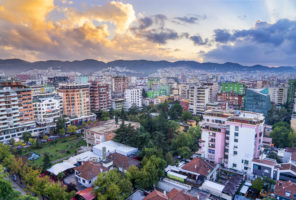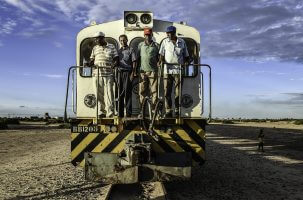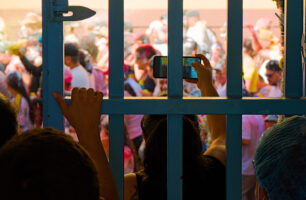Support Hidden Compass
Our articles are crafted by humans (not generative AI). Support Team Human with a contribution!
In what seemed like an instant, the glacial blue of the river turned to dark, silty gray. After many weeks of trekking across Patagonia, I had grown accustomed to the pristine waters that flowed through these mountains, but suddenly this river looked like it belonged in a city.
“That’s not the color of the river,” a local tour guide explained. “It’s usually transparent.”
~~
The sun fought to break through. For the past three days, as I’d trekked over rolling sand dunes, through dense, lofty woodlands, and across miles of infinite mountains, a thick blanket of clouds had obscured the sun.
Still, I walked, trekking towards a volcano.
There were no people talking. No insects buzzing. No birds chirping. All that lay ahead were miles and miles of desolation, and wildness, and silence.
It was hot, humid and raining. Sulfur wisped through the air, the scent drifting from the lava fields in the distance. All around me was a stillness that I had never experienced before.
I reached the top of a ridge and paused.
In front of me, a sweeping valley opened up, filled with cracks that split the earth apart. To my right, towering mounds of sparkling sand lit up the ground. To my left, a narrow river meandered through a canyon as sunlight finally burst through an opening in the clouds like a spotlight. And behind me, trailing in the direction from which I’d come, a boundless field of molten lava spewed smoke.
This was Patagonia.

A lava flow smokes and smolders just past the sand dunes in Puyehue National Park. PHOTO: GARRETT MARTIN.
I’d heard reveries of Patagonia long before I ever set foot there. The descriptions used most often included words like mysterious, powerful, and wild — nothing definitive. People who had visited Patagonia, or even lived there, couldn’t tell me in a single sentence what made this place so unique. There was a certain vagueness to their speech, as if they were trying to describe something, but just couldn’t find the words.

The infinite mountains of Patagonia seemed more like an idea than a place to author Garrett Martin. PHOTO: GARRETT MARTIN.
Patagonia, it seemed, was more of an idea than an actual place — an idea of somewhere wild and never ending; a place that could not be described, only felt. I had yearned for that feeling — a feeling of solitude and a stillness unrivaled by anyplace else.
I knew I had to find it.

Camping in the wilds of Patagonia on the way to a volcano. Puyehue National Park. PHOTO: GARRETT MARTIN.
In December of 2016, I headed south with my film crew to trek and raft through Patagonia for four months.
I’d decided on the Greater Patagonian Trail — the longest continuous trail in South America, totaling over 3,000 kilometers. But it’s hardly a trail. It’s more of an unfinished network of routes. Horse tracks, dirt roads, rivers — there is rarely a marked or distinguishable path. It is difficult to navigate. Aside from the few locals who use it, mostly for herding, it is rarely traveled.
The combination of remoteness, wildness, and difficulty made this trail more enticing to me than any other. And during our journey, we trekked and rafted over 700 kilometers of it.
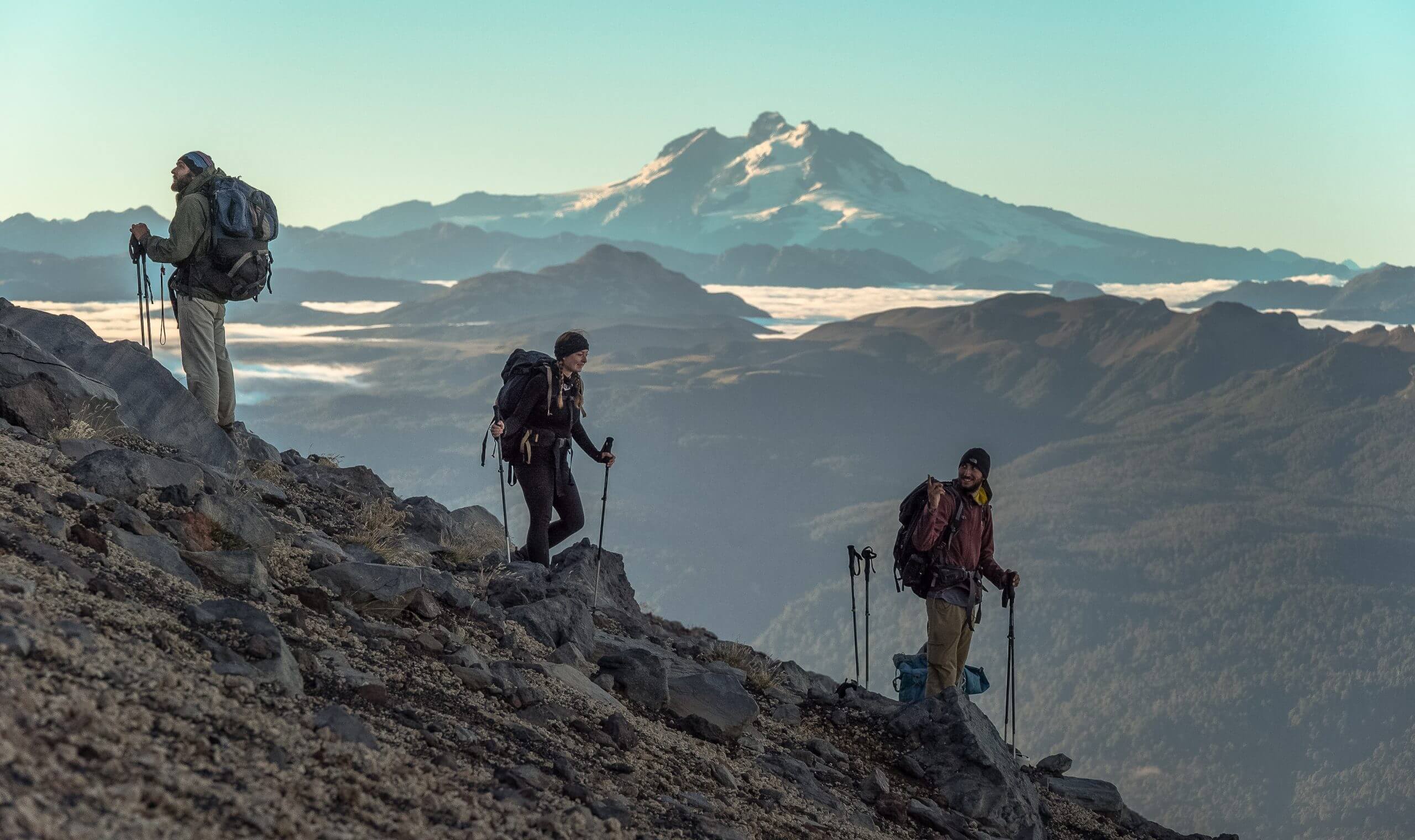
Author Garrett Martin and his film crew spent four months trekking and rafting through Patagonia. PHOTO: GARRETT MARTIN.
During one of our first long stretches, we stopped to rest at a puesto — a ranch house — that was tucked inside an expansive valley shadowed by sky-high mountains. We stayed with Irma — a tough but soft-spoken local rancher whose laugh and smile were pure happiness. Her family had lived there for generations.
“Why do you prefer to live out here, given the rough and harsh conditions, rather than in the safety of a town?” I asked her.
“There are many accidents, burglaries, and crime in the towns,” Irma said, “but here it is really quiet.…I like this life, because we can work. We don’t have to work for anybody. We are independent.”
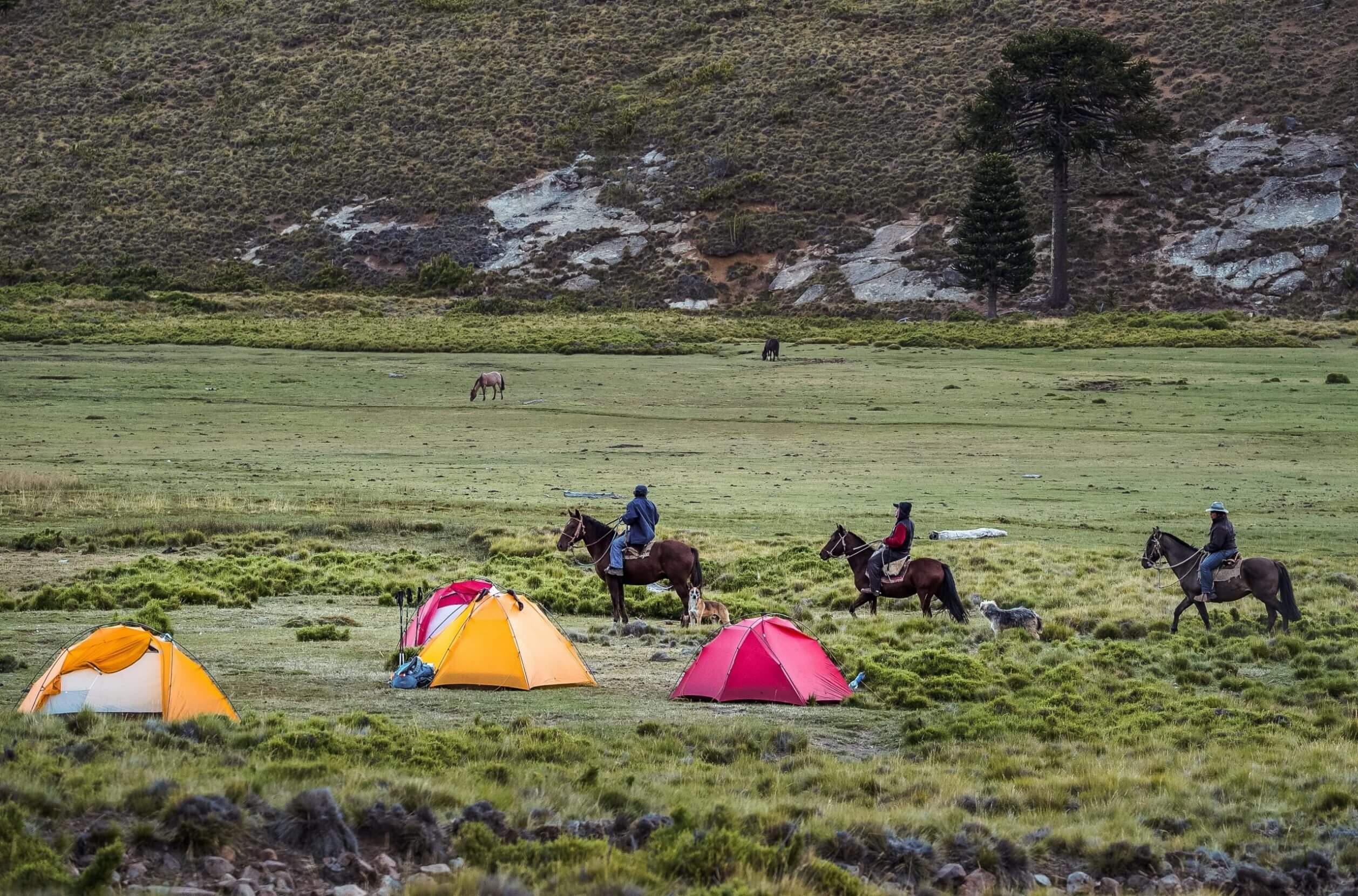
Gauchos ride past camp in the Pehuenco Valley. PHOTO: GARRETT MARTIN.
Her sense of freedom and beauty captivated me and I started to get a taste of the powerful, elusive feeling that brings people to the remote parts of Patagonia — that keeps them there.
I breathed in the clear air. Sunset illuminated the volcano towering above the valley as a flock of birds called from the sky. I could understand why Irma stayed.
We continued on.
~~
We passed through unspoiled places — snow-capped Andean summits, teal lakes reflecting the peaks that surrounded them, dense, mint green forests. With some of the cleanest water and air on the planet, Patagonia, it seemed, was flawless.
~~
Glacial waters ran swiftly — teals and blues glistening in the afternoon light. It was a beautiful image — until it wasn’t.
In San Fabian, a river town on the banks of the winding Río Ñuble, I began seeing signs along a dusty road. “No al Punilla,” they read. I wasn’t sure what that meant, but they were everywhere.
I met Francisco, a local environmentalist who exuded deep passion for and knowledge of the area. He explained that the signs were in protest against the construction of a large hydroelectric dam — often called a “megadam” — on the Ñuble.
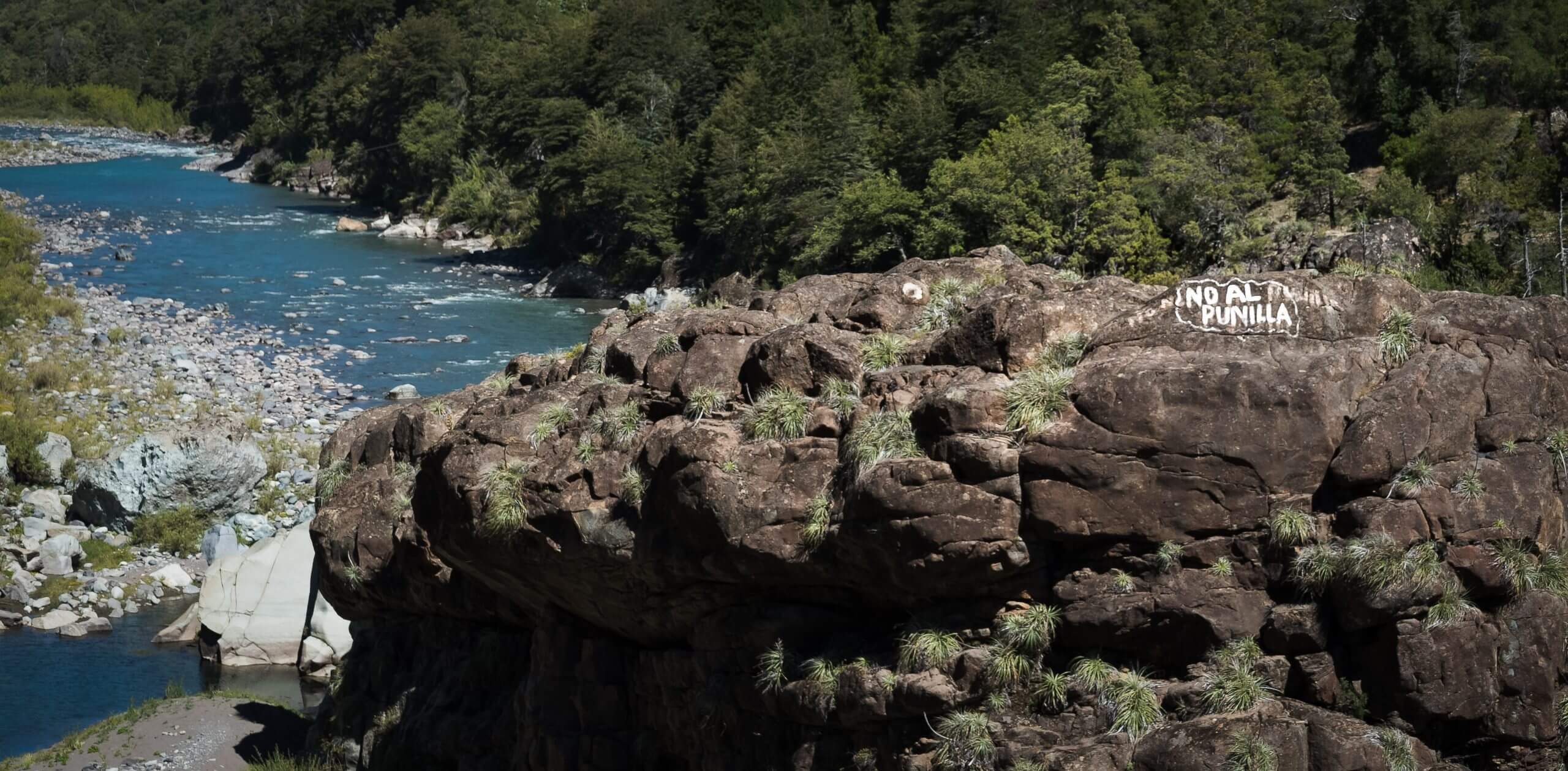
PHOTO: GARRETT MARTIN.
San Fabian’s residents were vehemently opposed, but the project was still moving forward. As Francisco spoke, it seemed as though he had been fighting to protect the area for decades, but he was only 29.
“At the national level,” Francisco explained, “the problem is a water code that establishes water as a consumer good. Any businessman from anywhere can come, acquire the water rights, and make the hydroelectric industry bigger, or whatever else this person wants.”
For the past 40 years, nations around the world have been removing dams, having recognized their negative impacts. To see a country as breathtaking as Chile building them, was both surprising and disheartening.
~~
The rumbling, banging, and beeping of heavy machines drowned out the wind blowing through soaring cypresses, the water cascading down the Río Ñuble, and the echoing of a Magellanic woodpecker as it drummed at a distant tree. The symphony of nature faded away. The animals disappeared.
This was one of many megadam projects we encountered in Patagonia. Each would alter the course of the river, change surrounding ecosystems, and open the door to extractive industries like mining and logging.
Maybe Patagonia was not so wild after all.
~~
At camp along the Río Manso, outside of Puerto Montt, glacial waters ran swiftly — teals and blues glistening in the afternoon light.
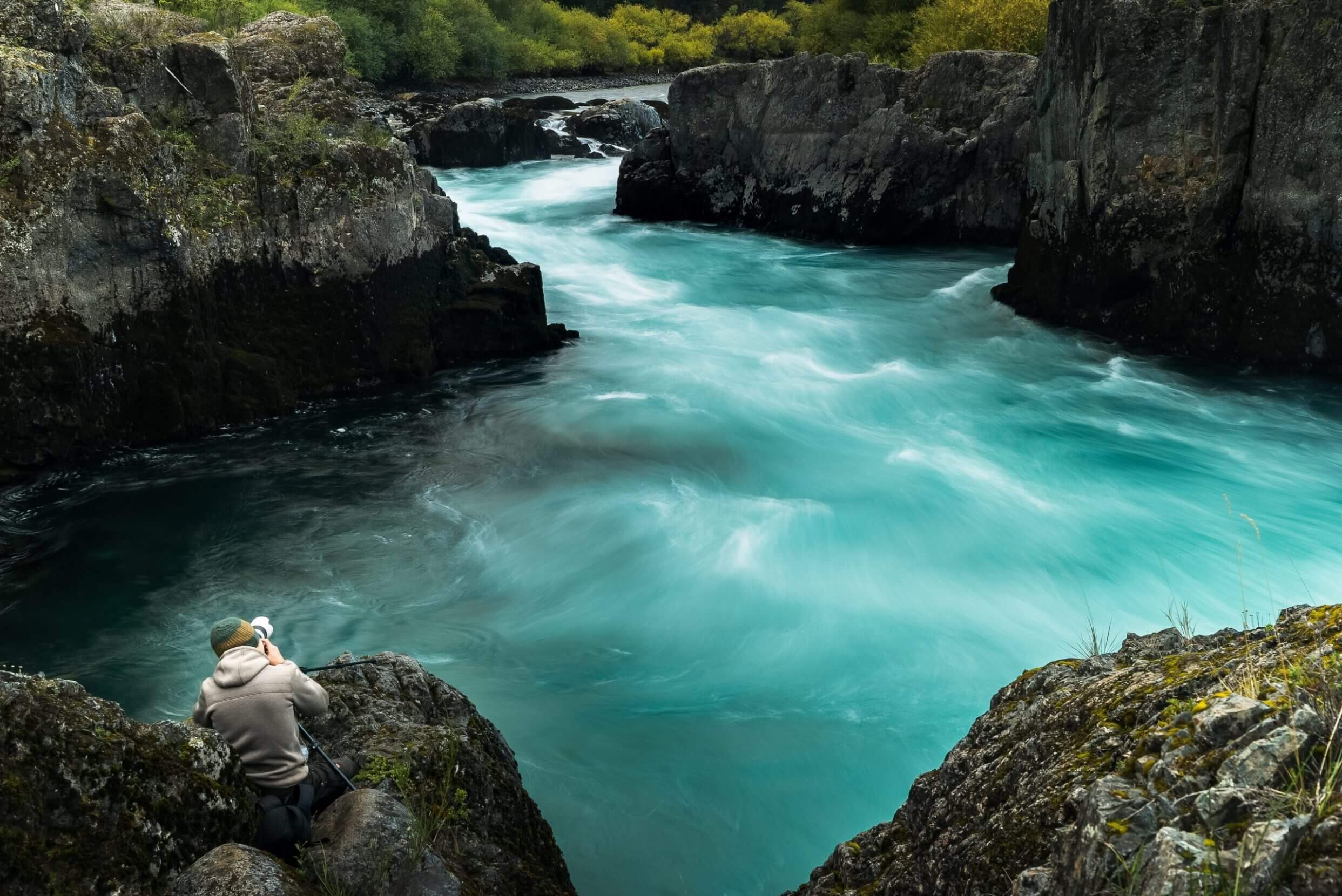
A member of the film crew captures footage of a glacial river as it flows swiftly below. PHOTO: GARRETT MARTIN.
It was a beautiful image — until it wasn’t.
When the water turned from glacial blue to dirty gray, it happened in minutes. Oscar, a local tour guide, explained that a hydroelectric dam was under construction further up the river. When work began at the site in the afternoons, waste and debris were dumped in to the river to flow downstream.
I could no longer hear the kingfisher’s call or watch rainbow trout rushing up the river.
As we started making our way along the murky waters of the Manso, the mysterious and awe-inspiring feeling of Patagonia slowly began slipping away.
~~
If we love something, we have the responsibility to protect it. That, I learned, is the Patagonian way.
Hydroelectric dams don’t exist in a vacuum. They are a response to our demand for energy. And that demand, it seemed, was destroying this pristine place.
Patagonians had other ideas, though. Less than a year after our trip, the Supreme Court of Chile denied the permit for the project on Río Manso. And before that, another plan to build five dams on the two most scenic rivers in Patagonia — and consequently flood 5,900 hectares of land — was canceled due to public outcry. Just recently, Chile, in collaboration with Kristine Tompkins of Tompkins Conservation, signed an historic agreement to protect some 10 million acres of land — an area roughly the size of Switzerland.
It all goes back to the idea of Patagonia — the idea of a place that is untouched and wild, unlimited and unspoiled. It is an idea that we have to fight for.

One of many waterfalls passed along the way as the group traversed snowy mountain passes in the Andes. PHOTO: GARRETT MARTIN.
In the Santiago streets, tens of thousands of people marched, subjecting themselves to tear gas and water cannons, just to protest the dams. In the backcountry of Patagonia, hundreds of gauchos rode over 200 miles to express their concerns for the rivers. And in the Andes mountains, kayakers performed death-defying first descents of rivers, just so people could see the beauty that needs protection.
If we love something, we have the responsibility to protect it. That, I learned, is the Patagonian way.
~~
As I paused on the ridge on the way to the volcano, time stopped. For a moment, I felt as though I were a part of nature, not separated from it as I often feel in my everyday life. From the lava, to the smoke to the air, to the rocks beneath my feet, everything seemed to be working together. The clouds danced across the sky. The sunlight poured onto the land, searching for things to illuminate. The wind blew along the Andes, sculpting them still. The river carved a path through the mountains. Everything was alive and I was part of it.
It was the connection that people in Patagonia have felt for millennia — a connection that carries a passion to protect the mysterious, the powerful, the wild.
Garrett Martin
Garrett Martin is an award-winning documentary filmmaker, photographer, and conservationist who's proud to call southern Appalachia his home.

